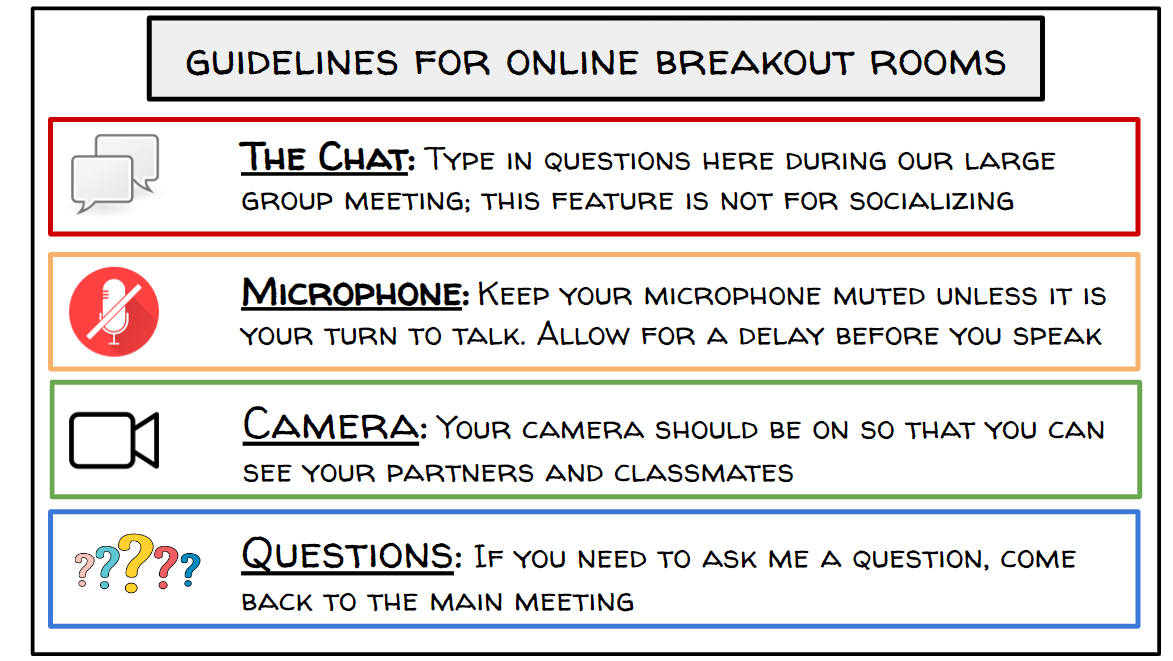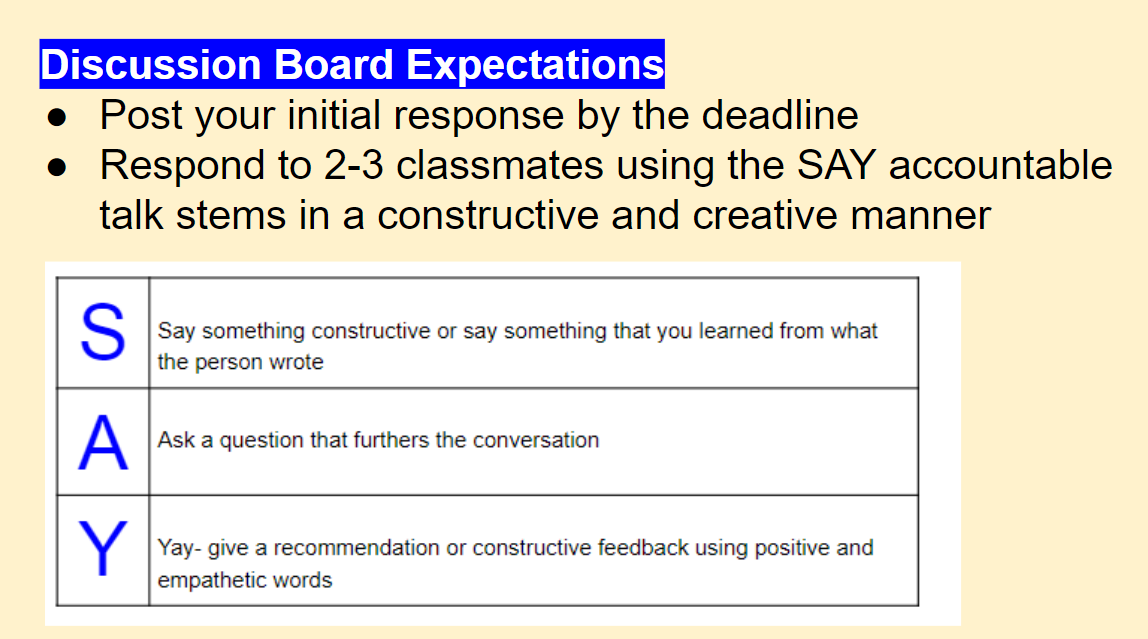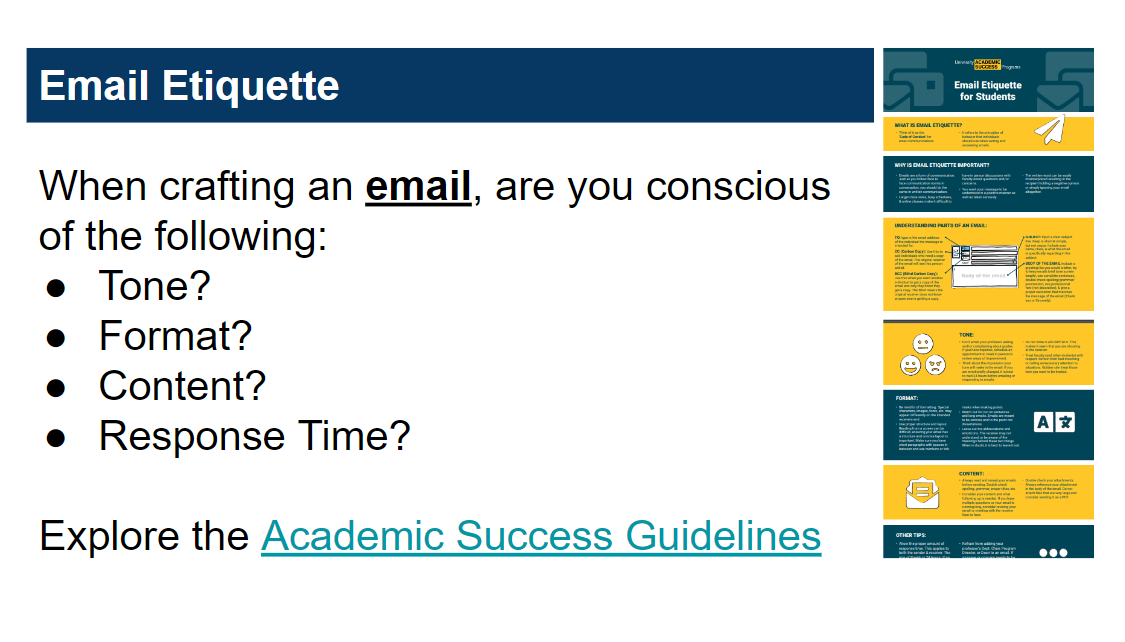Continuing our series with the 10 Strategies for Onboarding Students in Online Learning
6. Define the Process for Engaging Synchronously and Asynchronously
Communication between stakeholders takes a variety of shapes and forms. In this area of the onboarding unit, define how you want students to:
• Contact the teacher
• Collaborate and interact online
• Adhere to Virtual Norms
• Utilize Breakout Room rules
Online experiences might include posting a response in a blog, sending an email, or posting a video in a Flipgrid are using asynchronous communication, or communication at another time. Here, the intended message is posted and the response can be posted at another time without direct conversation with the messenger. Asynchronous responses can take hours, days, or weeks and the participants have time to think about the message.
In the example above, the Figure shows email reminders and points students to an infographic for further information.
With synchronous communication, messages are conveyed at the same time – such as during a webinar, in person, or in real-time in a collaborative document. Synchronous communication can often include emotional responses, as well as live-time interactions. Knowing this, often teacher provide breakout room rules and virtual norms to guide how students will behave in a live broadcast or webinar.

In the figure above, breakout room expectations are shared with students.
In this area of an onboarding unit, define for students how you want students to communicate with you when they have questions, comments, or concerns. For example, are students raising their virtual hand or asking questions in the chat? Do students need to follow the “3 before me” framework, where student try three different sources (eg. Ask a friend, Google it, go to the class Resources page) for the answer to their question before they resort to asking the teacher.
Accountable talk stems and troubleshooting guidelines are often at play in this area, as well as providing a structure for students to use discussion boards to post questions, send emails, or schedule appointments with the teacher. The classroom culture and environment are at play here – with rules for collaboration in the mix. Providing students with the expectations of how to behave in an online asynchronous environment vs. an asynchronous platform set the stage for positive interactions and accountability.

As you think about your own methods for communicating in asynchronous or sychronous methods, what do students need to know about each? Add your ideas to your running notes as we transition to the next strategy where we will explore engaging and motivating students based on best practices and models.
Click on NEXT to move on to Strategy 7 - Engage & Motivate




